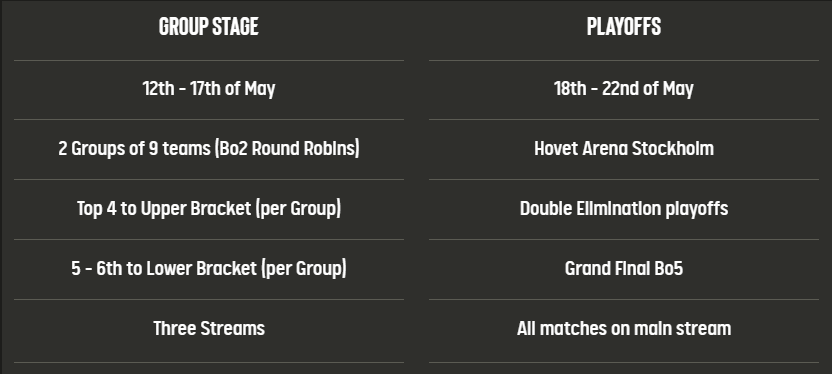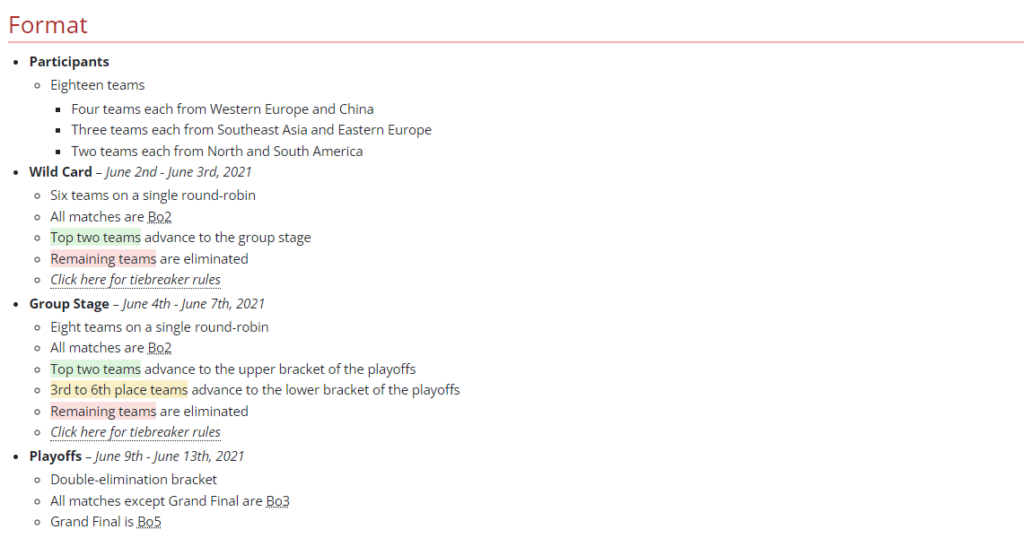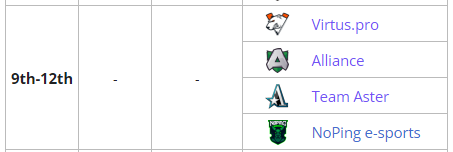The upcoming ESL One Stockholm Major will hold a format alike to The International instead of the previous Majors.
Valve’s next Dota 2 event, the ESL One Stockholm Major seems to have a significant change to its format.
According to ESL’s website, the format that we will see in the next Major will be the same as The International. In 2021, both Valve Majors used a different format that received a lot of complaints from the community. Most of the dissatisfactions are particularly about the first seeds of every region directly qualifying for the Playoffs and its overall messy structure.
The format that is stated on ESL's website is alike to The International where teams battle it out in Groups for a slot in the Playoffs.

We take a look at the format differences and how they affected teams, including how OG Tommy "Taiga" Le reacted to the change in a recent DPC interview.
ESL ONE Stockholm Major format vs the previous Majors

Here is the format of the previous Majors simplified:
- Each Region's top teams qualify for the Major.
- The slots for each region are: NA (2) SA (2) CIS (3) SEA (3) WEU (4) CN (4)
- 1st place directly qualifies for the Playoffs (Confirmed top 12)
- 2nd place qualifies for the Group Stage
- 3rd/4th place qualify for the Wildcard Stage
*Regions with 2 slots (NA and SA) don’t have the Wildcard slot.
The Major begins with the Wildcard Stage, eliminating the bottom three. Top 3 of the WC Stage qualify for the Group Stage. The bottom of the Group Stage is eliminated and the rest are sorted into Upper and Lower Bracket of the Playoffs. Only until then, we can see the first seeds compete.
This format was used in 2021 during the Singapore Major and the WePlay AniMajor. It was somewhat made to achieve balanced results for all regions and to reward teams for consistency. But the downside to it is there are lesser probabilities and it makes the tournament a little more predictable. There are also fewer matches for teams that are waiting at the Playoffs and more for those climbing from the Wildcard Stage.
It doesn’t help that most teams that were top 1 in their regions ended up flunking hard during the Playoffs. This could mean that other teams who were already competing had the warm-up advantage.
Teams suffered from the previous format
One instance of the format failing the top-performing teams from respective regions would be Alliance’s case in the WePlay AniMajor. They delivered a brilliant performance in the WEU DPC, standing tall with a 6-1 scoreline and placing 1st.

This qualified them directly into the Playoffs but as soon as it began, they dropped out of the tournament losing to both PSG.LGD and Team Spirit. Team Aster, the team that dominated the CN DPC, faced the same fate. From the Playoffs, Aster faced elimination after losing to T1 and TNC Predator. All the bottom 12 of the tournament are teams that directly qualified for the Playoffs.

This particular pattern can easily be blamed on the format as the top-seeds had no warm-up or a play advantage.
Taiga says the format change makes it more exciting with more games to play
After ESL unveiled the format, Sheever asked OG's Taiga about his thoughts during a post-match interview in the DPC.
Sheever: There are no Wildcards and there is no directly seeding into the Playoffs. So everybody will be playing Groups. How do you feel about that?
Taiga who had just known about the information, felt positive about the change, “Oh interesting, pretty nice actually. I mean it’s nice to see the Wildcards because [they’re] high-pressure games. It’s always fun to watch instead of to play it for yourself. But I don’t wanna play it, obviously,” he laughed.
The new format makes things more exciting. There are more games to play.
About no teams directly qualifying for the Playoffs, Taiga said that "it makes things more exciting. [There are] more games to play. I think the direct seed into the Playoffs is you basically just AFK for a couple of days and just watch Dota, but I want to play."
Even though he did mention he doesn’t want to play Wildcards, Taiga is confident with his team’s energy to survive long runs in a tournament.
“The amount of games you have to play [from the Wildcard Stage] is amazing. Our team has so much energy. So if we go to play 10 games, official or whatever, we would still have the energy to do it the next day. Even 20 games. Our kids are way too young for that."
Ephey pointed out that a lot of pros believe going straight into Playoffs is a disadvantage. Taiga agreed, "When you play a lot of games in the Group Stage, you get a better feeling than people who are actually watching the games. There is no way you can learn more from the people who are playing.. by watching. And that's why you can see a lot of Group Stage teams come through Playoffs and they just play better than the people who actually directly qualified to the Playoffs."
The ESL One Stockholm Major will begin on 12th May 2022 with the Group Stages. The main event will witness the return of a live audience in Hovet Arena Stockholm on the 20th - 22nd of May. As for now, we're still in the 4th week of the Regional DPC.
Stick around at Esports.gg for more Dota 2 news and updates!